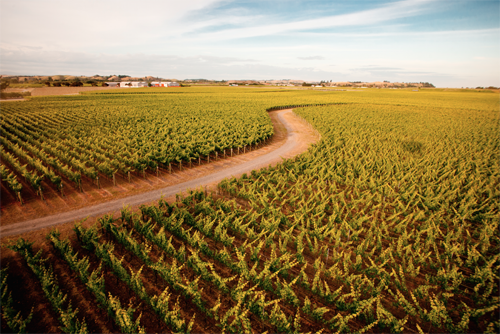Date£º
2015-08-14 15:08 Source£º
thedrinksbusiness Author:
Gabriel Stone Translator:
Hawke's Bay has a vital role to play in supporting New Zealand's export ambitions, but the region is struggling to create a clear identity for itself.

Photo credit: Craggy Range Vineyards
With major producers including Delegat, Villa Maria and Yealands Wine Group all buying into New Zealand's second largest region in recent years, and as Marlborough nears maximum capacity, Hawke's Bay is an obvious candidate for helping New Zealand Winegrowers to reach its target of NZ$2 billion (?41 million) by 2020.
"Hawke's Bay is extremely important to the continuing development of New Zealand's international premium wine image and as a result its export growth,?Michael Henley, CEO of Trinity Hill and chairman of the Hawke's Bay Winegrowers Association, told the drinks business.
"As demand for premium New Zealand wine continues to increase on the international stage Hawke's Bay has the ability to provide the quantity and quality that is required."
Despite this potential, the region is sending out mixed messages about where its focus lies. Although most producers pick out red blends or Syrah as the strongest calling card for Hawke's Bay, the latter accounted for just 4% of the region's grape tonnage in 2014, while 64% of the harvest was accounted for by white grapes, according to the Hawke's Bay Winegrowers Association.
As for the white wines, for all the praise attracted by Hawke's Bay Chardonnay, commercial pressures mean that many producers prioritise Sauvignon Blanc.
Fresh from a trip to Hawke's Bay, The Wine Society's New Zealand buyer Sarah Knowles told db: "Only about two producers I saw don't have Sauvignon Blanc as their biggest seller. It's bankrolling everything else."
Despite a positive report about the overall quality of wines emerging from this corner of New Zealand, Knowles also suggested that its most famous sub-region, Gimblett Gravels, was aggravating the challenge of creating a cohesive identity for Hawke’s Bay.
"Consumers are generally a bit confused about where Gimblett Gravels and Hawke's Bay sit,?she remarked. "Is it one region? Two regions? Gimblett Gravels can't grow any more so maybe now's the time to focus on Hawke's Bay.
With little sign of Syrah plantings expanding, Knowles highlighted Merlot as a particular strength of this region with enough scale to make a meaningful commercial impact.
“It ripens best, needs the least adjustment, doesn’t get diseased and the wines are looking great,?she said of the variety’s performance here. What’s more, Knowles noted, “Merlot can make decent wine at both high and lower price points.?/P>
Simon Kelly, European sales director for Yealands Wine Group, suggested that now was the perfect moment to raise awareness of this region and its red wines I particular. He told db: “With the 2013 vintage being one of the vintages of a lifetime in Hawke’s Bay, this is a time when we should be really banging the drum about our reds.?/P>